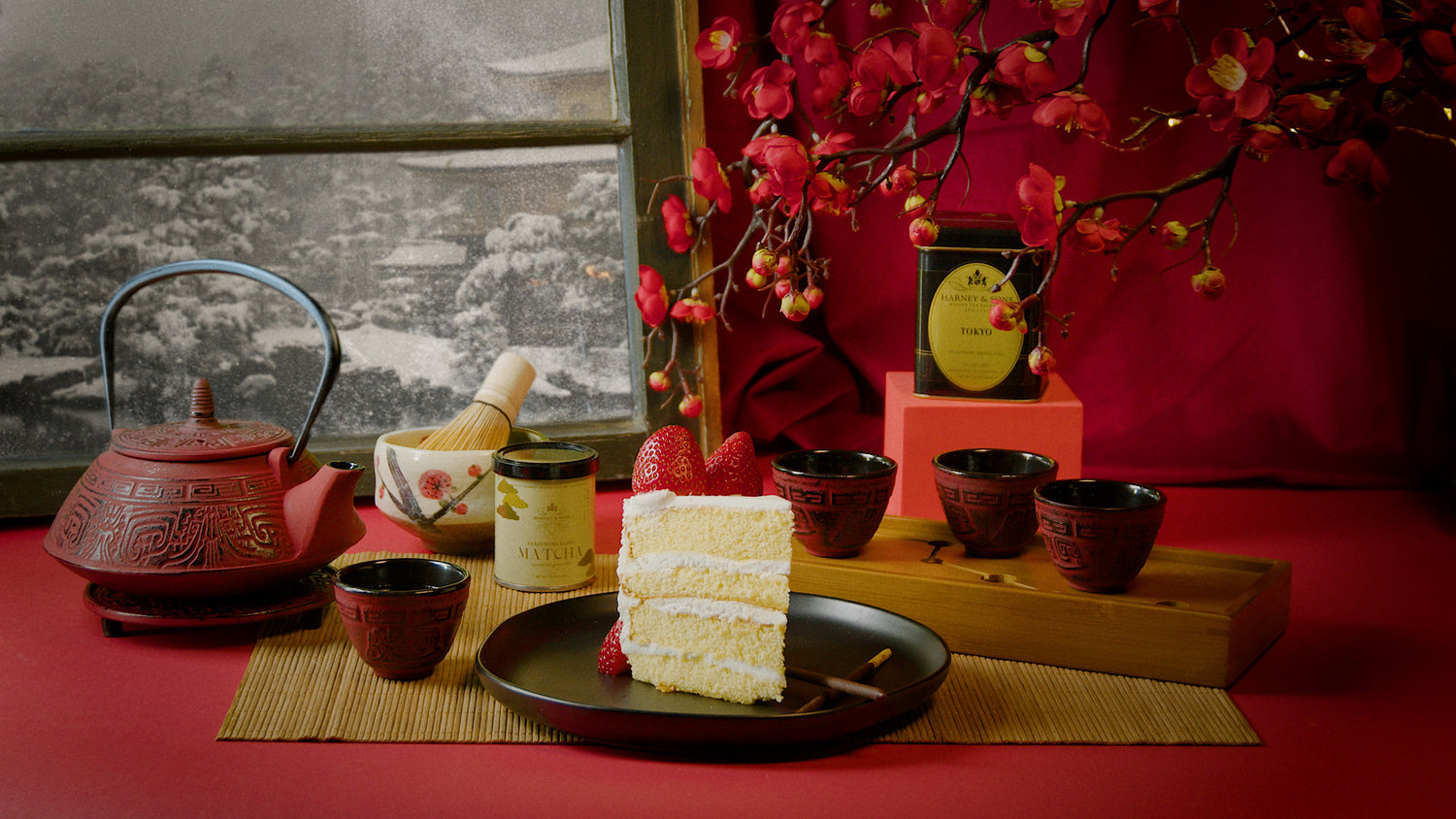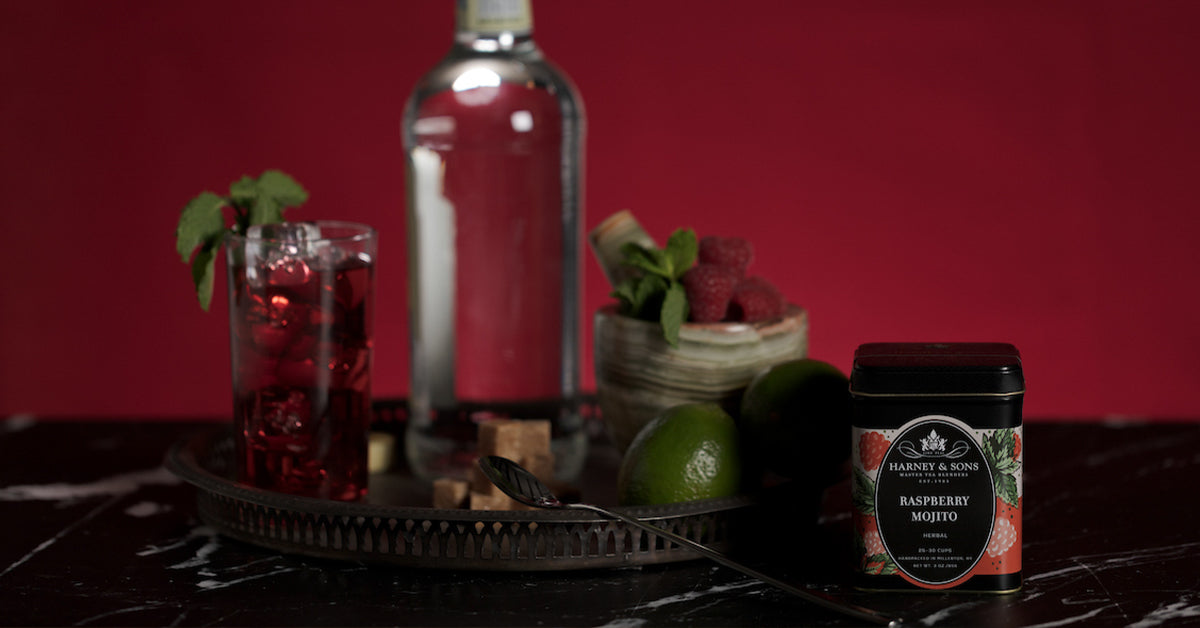Welcome to our first Harney Holiday Desteanation, Tokyo! If you’ve had the opportunity to actually visit Tokyo, you know what a spectacular and special experience it is. It is a global powerhouse of a city, with breathtaking modern architecture juxtaposed with ancient traditions.
Tokyo is, of course, Japan’s capital and one of Japan’s 47 prefectures, consisting of 23 central city wards and multiple cities, towns and villages. It is one of the world’s most populous major cities, with an estimated population of just over 14 million. By comparison, the population of New York City is 8.8 million. The Greater Tokyo area, however, had an estimated 37.5 million residents in 2018. How’d you like that rush hour?!
Prior to 1868, Tokyo was known as Edo. Originally a small castle town in the 16th century, it became the location of a feudal government and, a few decades later, had grown into one of the world’s most populous cities. It was renamed Tokyo (“eastern capital”) after the emperor moved there from Kyoto in 1868. To this day, local Tokyo cuisine is referred to as “Edo-mae” which means “in front of Edo,” referring to the former Edo Bay, now Tokyo Bay.
Tokyo is renowned for its cuisine, so no trip there is complete without sampling several signature dishes. Sushi is a must, of course, along with a healthy helping of wasabi. Soba noodles are happily slurped in restaurants across Tokyo. Tempura is something that we’re familiar with here in the U.S., but if you go to Tokyo (which has been widely recognized by Michelin for its fine dining, even more restaurants than Paris), try some more traditional dishes like chankonabe, monjayaki and Tokyo sweets like ningyoyaki, which are small red bean paste-filled cakes shaped like dolls, cartoon characters or other shapes. And of course the dish made famous in the U.S. by one episode of Friends: unagi. It really is eel and not an extra awareness of your surroundings as Ross insisted!
My dad, Mike, and I both love visiting Japan, where we source some wonderful teas. Read about my dad’s Japan travels in his Mike Harney Spills the Tea on Japan blog post. You can also learn about the beautiful Japanese tea traditions in our Japanese Tea Ceremony blog. And soon there will be a new Harney & Sons flagship store right in the heart of Japan! We will keep you posted on that.
Japanese Green Teas
As I just mentioned, my dad loves going to Japan to source great Japanese teas. Here are some examples of teas we are proud to carry and some products you can use in creating your own Japanese tea ceremony or whipping a mug of matcha.
Matcha Accessories
Matcha is a very special tea in its own right. While it has been around Japan for centuries, it has only gained popularity in the west in the last couple of decades. We’ve laid out everything you need to know about this green tea in our matcha blog post. Meanwhile, you can grab some cool matcha tools to literally whip up your own cuppa green goodness!
The Holidays in Tokyo
Did you know that Christmas is very popular in Japan? While only about one percent of the population is Christian, the Japanese have put their own spin on Christmas that is quite unique.
For instance, one fascinating practice is that of ordering Kentucky Fried Chicken for their holiday meal -- it’s incredibly popular! It started in the ‘70s as an idea by a Tokyo KFC store manager (who would later go on to become the CEO of KFC Japan) of putting together a “Christmas party barrel” filled with KFC chicken to fill the turkey void that existed then and now in Japan. The idea became so popular that even now, over 3.5 million Japanese families sit down to a KFC Christmas dinner. Now called “Christmas dinner packages,” they make up for one-third of KFC’s Japanese sales annually and must be ordered weeks in advance.

When they’re not busy ordering buckets of the Colonel’s finest, Tokyo residents are enjoying much of what we do at Christmas: continental-style markets with a large German influence -- think open-air Christkindlmarkt with mulled wines and beer -- shopping in festively decorated stores and malls, and enjoying mega holiday light displays. When we say “mega,” think like Godzilla-sized! Christmas light displays are a really big deal in Tokyo. Even the names tell you how spectacular they are: Yomiuri Land Jewellumination (millions of LED lights representing sparkling gems and so much more at this epic presentation); Tokyo Mega Illumination (featuring not only stunning light shows but an AR experience); Tokyo Skytree Town Magical Christmas (lights galore on and around the skyscraper as well as an ice skating rink); the Tama Centre Illumination (featuring a 50m-long Aquarium of Lights); and in a nod to this series’ worldwide popularity, Marunouchi Bright Christmas: Harry Potter, with festive wizarding world displays, like a giant tree decked out in lights resembling candles, taking over the district. This is just a short list of the holiday light displays that take over Tokyo during the holidays.
Want to bring a little Tokyo holiday into your celebrations? Other than ordering some finger lickin’ goodness, here are some traditional Japanese holiday treats you can make at home.
Japanese Christmas Cake
This very traditional dessert is simply a strawberry shortcake (made with sponge cake) covered in snowy white whipped cream and decorated with a circle of strawberries. The colors reflect those in the Japanese flag. It’s simply not Christmas in Japan without it.
Ingredients
For the cake:
- 1 tbsp soft butter or cooking spray
- ½ C rice bran oil, or sunflower oil
- 6 large eggs, separated, whites reserved for the meringue
- ¾ C milk
- 2 ½ C all-purpose flour, sifted
- 1 ½ C caster sugar (superfine sugar)
- 2 tsp baking powder
For the meringue:
- ½ tsp cream of tartar
- 2 tsp vanilla extract
For the filling:
- 1 ½ lbs. fresh strawberries, hulled and quartered
- 4 C cold heavy cream
Instructions
- Preheat the oven to 325°F.
- Lightly grease or spray a 9 ½-inch round cake tin, then line the bottom and sides with parchment paper; let the paper on the sides stand 2-3 inches above the tin as this cake will rise very high. Set aside.
- In a stand or electric hand mixer, whisk together the oil with the egg yolks and milk.
- In a separate large baking bowl, lightly mix together the flour, ¾ cup of the sugar and the baking powder. Tip this mixture into the egg mixture and whisk until all are incorporated.
- In a clean bowl, beat the egg whites, using a stand or electric hand mixer on medium speed until they turn slightly opaque.
- Add the cream of tartar and continue to whisk. The eggs will start to go white and thick. With the mixer running, slowly add the remaining sugar and the eggs will now turn glossy and thicken even more after a few minutes. Finally, add the vanilla and continue to mix for a minute more.
- Stir ⅓ of the meringue mixture into the cake batter. Then, slowly and carefully using a large metal spoon, fold in another ⅓ of the meringue and, when incorporated, add the final third, again folding, not mixing, so you do not lose the air from the egg whites.
- Pour the batter into the lined cake pan, gently level the top with the back of the spoon, then lift the cake pan 6 inches from the countertop and carefully drop as this will release any large air bubbles from the cake to ensure an even rise.
- Bake in the middle of the oven for 55 minutes, checking from time to time to make sure the cake is not browning too quickly; if it is, lower the heat slightly.
- Check that the cake is cooked by inserting a fine metal skewer into the center of the pan; it should come out clean and, if not, bake a while longer.
- Leave the cake in the pan on a cooling rack for 15 minutes, then remove from the pan and leave to cool completely. Once cooled, remove the paper.
Decoration Instructions
- Once the cake is completely cold, slice across horizontally into 3 even slices.
- Whip 2 cups of heavy cream to medium to firm peaks (the cream should stand up nicely when the beaters are lifted out), taking care to not over whip and make the cream too thick and hard.
- Cut the strawberry quarters in half and fold into the whipped cream.
- Place the bottom layer of the cake onto a cake stand or plate and spread evenly with half of the strawberry and cream mixture. Place the middle layer on the top and repeat. Finish with the top layer, then place in the refrigerator to chill slightly.
- Whip the remaining cream to firm peaks and, using a palette knife, cover the cake in an even layer across the top and sides. The cream can either be smoothed out with the knife or left fluffy, as you prefer. Decorate with a circle of strawberries around the top.
Download the Japanese Christmas Cake Recipe
Matcha Ice Cream

A perfect Japanese-themed accompaniment to a beautiful white and red Japanese Christmas Cake is green ice cream! Our thin grade matcha is perfect for whipping up this unique, creamy (and dreamy) ice cream.
Ingredients
- 1 14-oz. can sweetened condensed milk
- 2 tsp Jobetsugi
- 1 tsp pure vanilla extract
- Pinch fine salt
- 1 C heavy cream
Instructions
- In a large mixing bowl, whisk together the sweetened condensed milk, matcha, vanilla and salt.
- In a separate mixing bowl, whisk the heavy cream on medium-high until firm peaks form, about 2 minutes.
- With a rubber spatula, fold a big dollop of the whipped cream into the matcha mixture until combined.
- Fold the lightened matcha mixture into the whipped cream until combined.
- Pour into a chilled 9x5x3 inch metal loaf pan. Cover with plastic wrap and freeze for 3 hours or overnight.
Ozoni

Once Christmas is over, New Year’s isn’t far behind! Ozoni is a traditional Japanese New Year’s dish, a soup that contains chicken, fish, vegetables (make them pretty if you want to be more traditional), mochi and a wonderful broth. If you can’t find some of the traditional Japanese ingredients or don’t have a Japanese market in your area, look online for substitutes or see if you can order ahead of time. It’s definitely a labor of love, but worth it!
Ingredients
- 2 boneless, skinless chicken thighs, cut into ¾ inch pieces
- 2 tbsp dry sake
- 1 tsp kosher salt, plus more as needed
- 1 oz. sliced or whole dried shiitake mushrooms
- ⅓ oz. kombu, about two 6x2-inch pieces (kombu is edible kelp or seaweed)
- 2 qt. warm chicken stock or low-sodium chicken broth or water (water is traditional, up to your preference)
- 1 4-oz. bunch spinach, washed
- 1 3 ½ oz. piece of burdock root, peeled, julienned and held in water acidulated with lemon juice
- 1 3 ½ oz. lotus root, peeled, sliced crosswise about 2 mm thick, and held in water acidulated with lemon juice (optional)
- 1 large carrot, peeled and sliced into 1/16 inch thick rounds (cut with a channel knife to look like flowers, if desired)
- 1 small daikon, peeled and sliced into 1/16-inch thick rounds (cut with a channel knife to look like flowers, if desired)
- Large pinch bonito flakes (katsuobushi)
- 2 tsp light (usukuchi) or dark (koikuchi) Japanese soy sauce, plus more as needed
- 8 slices naruto kamaboko (Japanese white fish cake with pink swirl), each about 2mm thick
- 3 rectangular pieces of kiri mochi, each split into 4 pieces along scored lines
- 8 sprigs mitsuba (Japanese parsley, optional)
- Thinly sliced scallions for garnish
- Zest of half a fresh yuzu, Meyer lemon or regular lemon
Instructions
- In a small bowl, stir together chicken, sake and 1 teaspoon kosher salt. Refrigerate for 1 hour.
- In a 3-quart saucepan, cover shiitake mushrooms and kombu with the warm stock or water. Let stand for 30 minutes.
- Meanwhile, bring a medium pot of water to a rolling boil and set up an ice bath. Add spinach and boil until tender, about 30 seconds. Using a slotted spoon or strainer, transfer spinach to the ice bath to chill. Remove from the ice bath, squeeze out excess water, then roughly chop. Set aside.
- Return water to a boil, add burdock root and cook until just tender, about 2 minutes. Transfer burdock to ice bath, then remove from ice bath and set aside in a small bowl. Add lotus root, if using, to the boiling water and cook until crisp tender, about 2 minutes. Shock in the ice bath, then transfer to another small bowl and set aside.
- Add carrot and daikon to boiling water and cook until just tender, about 1 minute. Shock in an ice bath, then drain and reserve in a small bowl.
- Set the pot with shiitake mushrooms and kombu over medium heat and bring to a gentle simmer. Remove kombu (you can save it for another use). Add bonito flakes and allow to simmer for 5 minutes. Remove from heat and let stand for 5 minutes. Strain broth through a fine-mesh strainer into a heat-proof container. Rinse out the saucepan, then return the strained broth to the saucepan.
- Add soy sauce to broth, then taste, adding more if desired; you can also season with some salt if you want more sodium without a stronger soy flavor.
- Return broth to a gentle simmer. Drain chicken of excess liquid, then add to broth and cook for 2 minutes. Add sliced fish cake and cook for 1 minute longer. Reduce heat to a low simmer to keep warm.
- Heat a medium cast iron skillet over medium-high heat for 2 minutes. Add dry mochi pieces to the skillet and cook, turning every 30 seconds, until puffed and golden on both sides; adjust heat as needed to develop a nice color on the mochi without burning it.
- Divide mochi among 4 serving bowls. Arrange burdock root, lotus, spinach, carrot, daikon, chicken and fish cake in each bowl. Ladle hot broth into each bowl. Garnish with mitsuba, scallions and citrus zest. Serve.
















2 comments
Anna
Loved this collection of recipes! Anything with matcha, I’m in.😊🍵
Loved this collection of recipes! Anything with matcha, I’m in.😊🍵
Alice
Loving the Harney Holiday Desteanations! I’ve practically bought all the Harney and Sons teas with city names (Tokyo, Boston, London Fog, Soho, etc) but now I get to do it officially! Happy Holidays!
Loving the Harney Holiday Desteanations! I’ve practically bought all the Harney and Sons teas with city names (Tokyo, Boston, London Fog, Soho, etc) but now I get to do it officially! Happy Holidays!